'Age-Friendly Homes and Connected Communities' - Leeds 2025
Hosted at the Marriott Hotel in Leeds in March 2025, the conference brought together housing, health and social care leaders to explore age-friendly homes and connected communities.
Speakers highlighted sustainable housing, inclusive design, and the integration of health and care services.
A big thank you to our sponsors, speakers, and delegates for making the event such a success.
Your collaboration and insights will help shape the future of housing and communities, ensuring we create inclusive spaces for people of all ages.
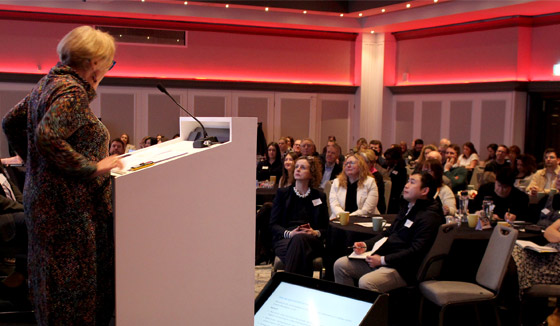
The insights and experiences of our attendees highlight the value of the discussions, networking, and expert-led sessions that took place.
Below are just a few of the comments from those who joined us.
Speaker presentations
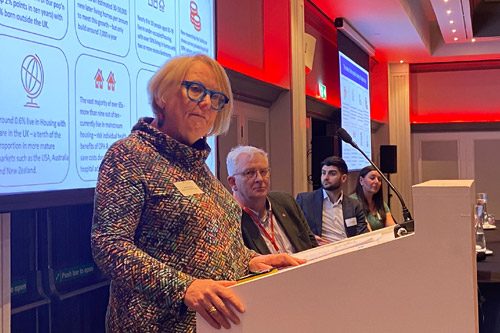
Professor Julienne Meyer, Chair of the Older People’s Housing Taskforce
- The long-term housing strategy must emphasise a life-course approach for an ageing population and strengthen planning policies to create diverse, age-friendly and inclusive homes and neighbourhoods.
- Intergenerational communities foster social connections, reducing reliance on the state. Supporting ageing in place improves well-being, prevents hospital admissions, and frees underoccupied homes.
- Expansion must be scalable, affordable, and financially viable.
- A new model is needed to serve lower- and middle-income groups.
- National information platform and local hubs are essential to build confidence in planning for later living.
- Collective leadership and integrated working across housing, health and social care is key to driving change.
Links:
- Slides: Why the Older People’s Housing Taskforce Report Should Be the Centrepiece of Housing Policy
- Older People's Housing Taskforce report: Our Future Homes: Housing that promotes wellbeing and community for an ageing population
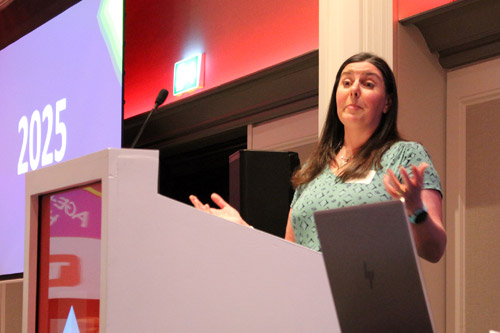
Susan Rugg (pictured), Regional Director, and Evan Sleeman, Associate Director, AtkinsRéalis
Creating sustainable, lifelong housing and neighbourhoods by focusing on longevity, adaptability, and community cohesion in housing design.
Links:
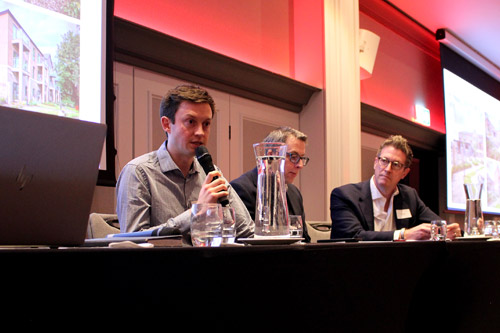
Mark Heron, Senior Architect, P+HS Architects
Mark Heron from P+HS Architects visited The Sycamores extra care one year on from completion to speak to residents and staff to gain first hand feedback.
His presentation shared some of the key insights and reflected on how the building had been functioning. The scheme embraced intergenerational living and dementia friendly design to create a thriving community that helped combat isolation.
The presentation exemplified how thoughtful design can enhance the well-being of residents, and supported the recommendations in the Older People’s Housing Taskforce report to create more high quality purpose built accommodation in further locations.
Links:
- Slides: Designing Aspirational HAPPI Homes for Our Ageing Population
- Blog: A Village Apart: Rethinking Age-Segregated Retirement Housing for a More Intergenerational Future
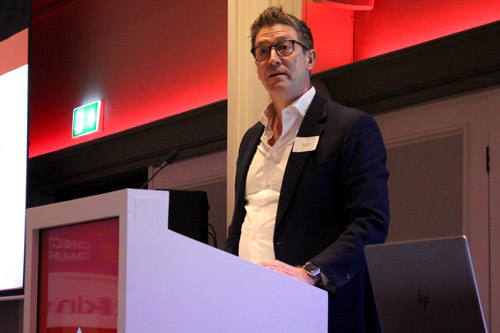
Emil Peters (pictured), CEO, and Angus Honeysett, Head of Global Market Insight, Tunstall Healthcare Ltd
Digitally Connected: A White Paper for Improving Citizen Outcomes and Shaping Local Markets was presented by Angus Honeysett from Tunstall Healthcare where he explored the integration of housing, health, and social care through digital innovation.
The paper emphasises the need for proactive, technology-driven solutions to address challenges posed by an aging population with evolving healthcare demands.
Key takeaways include the role of telecare in preventative care, the shift from analogue to digital systems, and the importance of collaboration among stakeholders.
By using technology, policymakers can enhance citizen well-being, reduce healthcare costs, and create sustainable, future-proof systems that empower individuals to live independently at home.
Links:
- Slides: Shaping Markets and Improving Citizen Outcomes
- White Paper: Advancing Technology Enabled Care - Who Cares And Who Pays?

Elaine Unegbu, Chair, Age Friendly Manchester Older People’s Board
- Homes provide safe spaces, give peace of mind, prolong independence and allow older people (OP) to age well in place. Designing homes for life is crucial.
- A significant number of OP live in rented accommodation, often in dangerous and precarious conditions. There are OP who own their own home, unfortunately more likely to be property rich and cash poor.
- People from Black and Ethnic Minority ( BAME) background are more likely to be living in housing deprivation and poverty which stops them thriving in place.
- Lack of commitment to repairs whilst living on a fixed income, causes fear, anxiety and often having to relocate causing isolation and a breakdown in social cohesion.
- The lack clear unambiguous information and the digital divide causes concern.
- The biggest flaw in many inclusion policies is the lack of attention given to ageism and not properly recognising age as a protected equalities characteristic.
- Where value is being delivered there is measurable impact of health and wellbeing.
- Much more needs to be done to improve the lives of OP, involving OP and working together we can accomplish this.
Links:
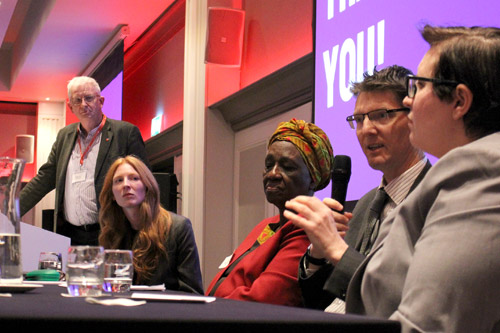
Stephen Finlay, Research Director, Ipsos
Summarising key findings from a large-scale quantitative survey of older people across the UK, the presentation highlights a strong preference for older people to stay in their current home, with adaptations if necessary.
The stated propensity to move home in the short-term is low but increases in the longer term.
Moving to a smaller home is seen as a common motivator, although personal attachments and moving costs are seen as barriers.
While stated preferences for specialist housing are relatively low, rising heath-related moves may see future demand increase.
Overall, findings suggest future housing solutions need to balance preferences for ageing in place alongside appealing forms of alternative and specialist provision.
Links:
- Slides: Understanding the housing preferences of older people
- Older People’s Housing Preferences report

Megan Wilson, Planning Director, Marrons
Changing the narrative around specialist housing for older people to challenge misconceptions and highlight its importance in providing choice, security, and quality living environments.
Links:
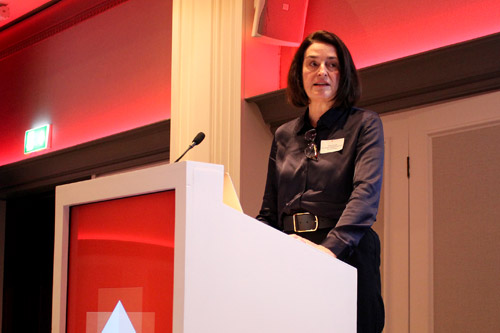
Sean Cocking, Commissioning Lead, North East & North Cumbria Integrated Care Board, and Fiona Brown (pictured), Programme Director, Housing, Health and Care Programme, NE ADASS & Health and Care Partnerships
The North East and North Cumbria's Housing, Health, and Care programme is our commitment to ensuring that people in our region can live the life they want to live, where they want to live, and be as healthy as possible. We've set out our five-year roadmap, based on a detailed understanding of where we are now, strong engagement from sector partners, and underpinned by a new Memorandum of Understanding. In our Older People priority, we're working to improve access to adaptations, developing a regional approach to increase the number of age-designated and care-ready homes, and providing training to support our workforce to understand the opportunities to use technology and to promote dementia-friendly approaches.
Links:
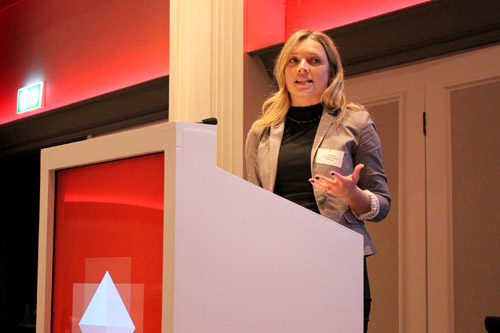
Laura Wood, Co-Founder and Director of Marketing, Invisible Creations
The key message of Creative Inclusive Design – Equipping Our Homes for the Future is the urgent need to shift from reactive, crisis-driven home adaptations to proactive, inclusive housing design. With nearly half of social housing households including someone with a long-term health condition, the current slow and disjointed approach to accessibility is failing residents. The consequences are severe, as highlighted by recent cases of neglect in the Housing Ombudsman’s Server Maladministration report (January 2025).
The solution is simple: embed inclusive design principles from the outset—creating adaptable, flexible homes that benefit everyone. Through our Fit for Our Future campaign, housing providers are encouraged to adopt proactive planning and innovative design to ensure dignity, independence, and long-term well-being for all residents. At its core, the initiative is built on three key elements: discreet, functional adaptations; a proactive delivery model; and a commitment to tenant involvement. Moving to this model means that people of all ages and abilities can live in their homes comfortably and independently. It removes barriers, removes stigma and makes spaces flexible and accessible for everyone.
Links:
For more information on how to make sure your homes are #fitforthefuture visit www.fitforourfuture.today
- Slides: Creative Inclusive Design: Equipping our Homes for the Future
- Blog: Equipping Our Homes for the Future
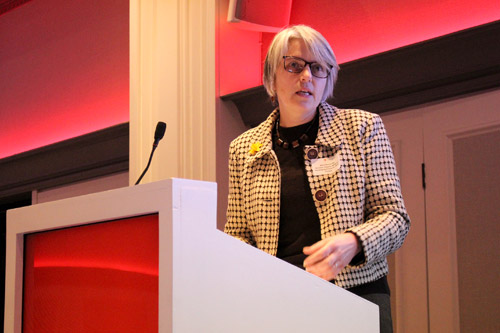
Anna Dixon MP, Co-Chair Inquiry, APPG on Housing and Care for Older People
The Government is committed to building 1.5m homes by the end of this Parliament.
We must build age-friendly homes, that cater for our increasingly ageing and changing population. They should be high quality, adaptable and accessible, bringing benefits to health and the NHS, social care, and our high streets. They should be within intergenerational communities, strengthening existing social ties and building new ones. We should follow the WHO model, providing the essential building blocks for thriving communities.
The APPG on Housing and Care for Older People has launched an inquiry in this area - Creating Intergenerational Communities. It will take evidence and make recommendations, bringing together stakeholders and feeding into the National Housing Strategy.
Links:






